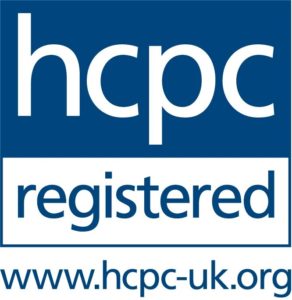Biomechanical Assessments
Contact Trinity Podiatry for biomechanical assessments and gait analysis in Edinburgh
Causes and symptoms of excessive pronation
The pronated foot is one in which the heel bone angles inward and the arch tends to collapse. Pronation flattens the arch as the heel strikes the ground in order to absorb shock.
Excessive pronation can lead to foot pain as well as: knee pain, shin pain, Achilles tendonitis, posterior tibial tendonitis, soft tissues over stretching, corns & callus, back and buttock pain, ankle or Achilles pain and plantar fasciitis or heel pain.
This causes the joint surfaces to function at unnatural angles to each other. When this happens, joints that should be stable become very loose and unlocked and ankle sprains can occur.
At first, excessive pronation may cause fatigue. As the problem gets worse, strain on the muscles, tendons, and ligaments of the foot and lower leg can cause permanent problems and deformities.
Excessive pronation is usually inherited but may also be acquired as a result of injury, e.g. a broken leg. In such cases, where the legs may be of a differing length the foot of the longer leg will compensate by means of pronation to attempt to ‘level off’ the disparity and make walking easier.
Although all the above complaints can result as a direct consequence of excess pronation, it is unusual to experience more than 1 or 2 symptoms and if you do this can indicate the severity of your poor foot function.
Causes and symptoms of excessive supination
The opposite of pronation is excessive supination, but this is less common. Excessive supination causes symptoms of pain due to the foot’s inability to be a good shock absorber. Again, back pain, knee pain and heel pain can be symptoms.
Pronated foot treatment options
It may be possible to control pronation using correct footwear. Change your running shoes regularly, approximately every 500 miles or 100 hours of wearing. Other shoes should be re-heeled or thrown out once they become worn in the soles and uppers.
If that doesn’t help then orthoses may be required. These are devices which are placed in the shoe and they hold the foot in a more optimal position for heel strike and into foot flat or mid-stance phases of walking or running.
A functional orthotic device will allow normal foot pronation during gait.
Custom-made functional foot orthoses
At Trinity Podiatry, Jacqui Baggaley, Podiatrist, specialises in custom-made functional foot orthoses preferring them to off-the-shelf one size fits all devices which you can buy from chemists and from magazines.
A bit like one size fits all glasses, they are not as good as optician dispensed glasses. Imagine wearing off the shelf false teeth!
How custom-fit devices are made
A custom-fit pair of devices are made following a biomechanical examination.
The podiatrist watches you walking/running (gait analysis), takes a range of measurements lying down and the results of which enable her to determine the prescription and type of device to be made.
Plaster of Paris non-weight bearing casts of the feet are then taken, these are then sent to a laboratory who specialise in the manufacture of orthoses. (Orthoses made from a standing cast or walking over a force plate capture the foot in an inappropriate or less than ideal position and can’t move it back into an optimal position, so are less successful).
Many people suffer with foot problems, leg, knee and spinal conditions, because of the structure, or position of the feet during standing, walking or running on the hard-concrete world we live in.
Gait analysis
What is gait analysis?
Analysis of gait (or watching you walking and running) is a tool podiatrists use to help with diagnosis and the assessment of the effect foot orthoses (and footwear) have during running and walking.
The patient is watched, firstly barefoot, and then sometimes with shoes/trainers and orthoses placed inside the shoe/trainer. Video of the gait enables the practitioner to analyse walking and running in more detail by freeze-framing the film at important stages or the gait cycle.
During gait analysis the practitioner would look for head movement, position of the arms, trunk, pelvis legs and knee rotation. A close inspection of the feet and ankles and how they are deformed by the upward force of the ground, would also take place.
Anatomy of a foot
The foot is composed of 26 bones, 16 intrinsic muscles, 33 joints, dozens of tendons and hundreds of ligaments.
All these components work together to give support, balance and mobility. The foot has to be a stable structure for standing, yet it has to be able to adjust quickly during walking and running.
How walking and running affect gait
During running and walking the foot must adapt to any uneven surfaces, by “unlocking” the bones. Then, in an instant during running and walking (just after mid stance) it has to prepare for the propulsive phase of gait.
Here it must become a rigid lever, to enable it to propel itself and the lower limb forward.
There is a kinetic chain of events that causes the body to move forward from the impact of landing, to the propulsive phase of gait that involves many bones of the lower limb.
In sequence they are:
Joints connect all these segments together, such as the knee which connects the thigh to the leg. There are many joints of the foot – each having a part to play in locomotion.
Bones, muscles, tendons and ligaments (of the lower limb) all work together and act as shock absorbers, by rotation and compressions, and then move in the opposite direction preparing the limb for take-off.
Muscles are very important in that they initiate – and stop – the movement and stabilise the limbs. Walking starts with the heel striking the ground, followed by mid-stance, then propulsion and toe-off.
The rest of the time this leg and foot are in the ‘swing phase’.
Where walking and running differ
Walking and running differ, in the main in that there is no double support phase (both feet in contact with the ground at the same time) and with running, both feet are off the ground at the same time and the body becomes airborne.
During running the support phase is reduced to 30% of the gait cycle – compared with 60% in walking.
Other differences in running include; more vertical movement, more flexion of the arms and at heel strike the foot moves up and toward the leg (dorsiflexion). It moves down in walking!
Injuries are therefore more likely to occur in running & exercise than walking due to the increased stresses involved.
One of the main reasons injuries happen is due to too much foot motion – pronation during the stance phase.
Pronation is a necessary and vital part of gait, but too much or too soon, can have a major impact on the other joints and muscles involved in gait. Excess foot pronation affects many people and is characterised by in-rolling of the feet, low arch height, and out-toeing walking style.





